The whole Adriatic Sea in one soup, il brodetto! What once was a traditional poor man’s dish of Adriatic fishermen is now one of the highlights on the menus of beach resorts along the Adriatic Sea. And even the Ristorante Uliassi in Senigallia, which has been awarded 3 Michelin stars, offers a Brodetto interpretation!
The origins are diverse and – it seems – as old as the Adriatic fishing itself: in the past the brodetto was prepared by fishermen directly on the boat, using the “by-catch”, the fish that sell badly because of their size and quality. Today every town has its own version of the brodetto. Le Marche – along with Emilia Romagna – claims the origin of the dish for itself; but you can find it all along the Adriatic Sea in both Italy and Croatia.
In Ancona, this fish soup is very thick and based on fresh tomatoes. In Civitanova, a lot of different fish and scampi are used and in addition to roasted bread, polenta is sometimes served with it. In San Benedetto del Tronto they use green tomatoes and peperoncini for the sauce, and in Fano they use tomato puree instead of fresh tomatoes, but they mainly use fine fish and crustaceans. In Porto Recanati, no tomatoes are used at all, but a fish broth that is refined with wild saffron from the nearby Monte Conero nature reserve. Here we got a demonstration of the preparation by a chef of one of the upscale hotels on the occasion of a photo walk in Porto Recanati:
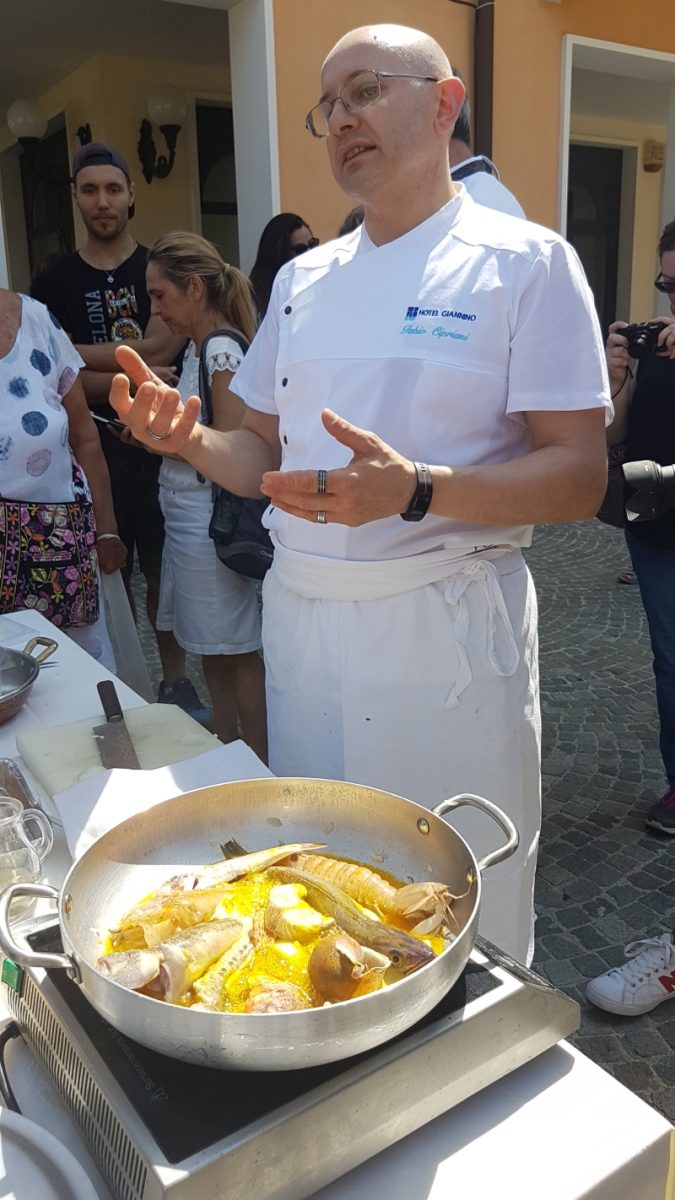
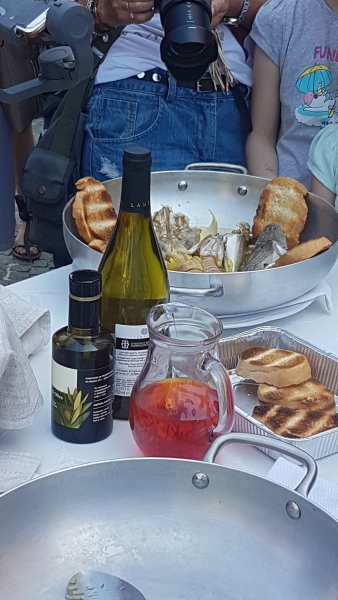
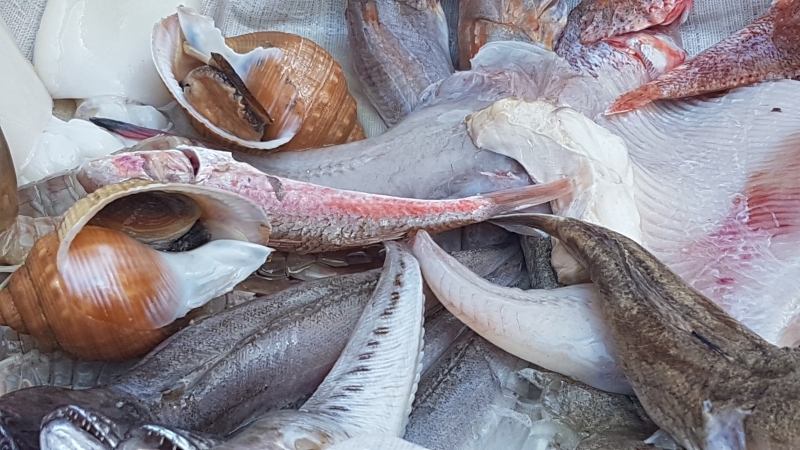
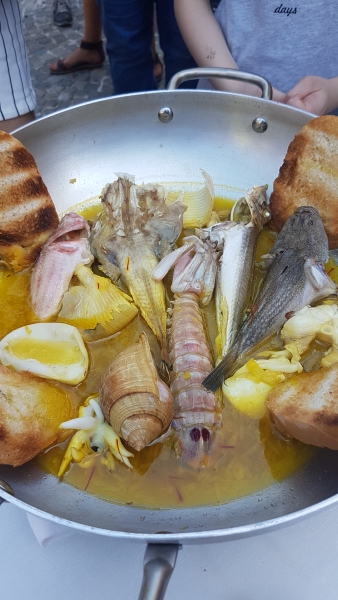
Generally, the brodetto is slow-cooked in a high-sided pan and then served in the pan with toasted bread. Around 500 grams of various local fish and shellfish are used per person.
Be careful: brodetto is not offered in all restaurants and you have to pre-order at least one day in advance.
Elke wanted badly to try the brodetto and finally found a nice restaurant in Porto Recanati with the best ratings. Unfortunately, the timing was bad as in that moment fishing on the Adriatic paused. It is called “Fermo Pesca” and is required by law, and it is the time from August to mid/late September when the fishing stops to help the sea and its inhabitants to regenerate.
But finally Elke and Otto made it in November! They tried the traditional fish restaurant “Sott’aj Archi” (Under the Arcades) in Ancona, recently recommended by the renowned Michelin Guide.
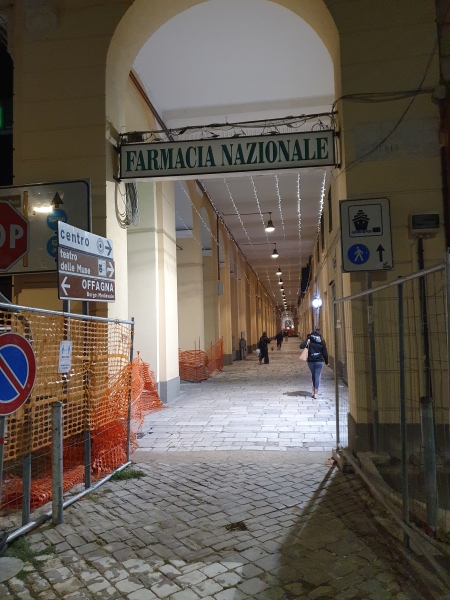
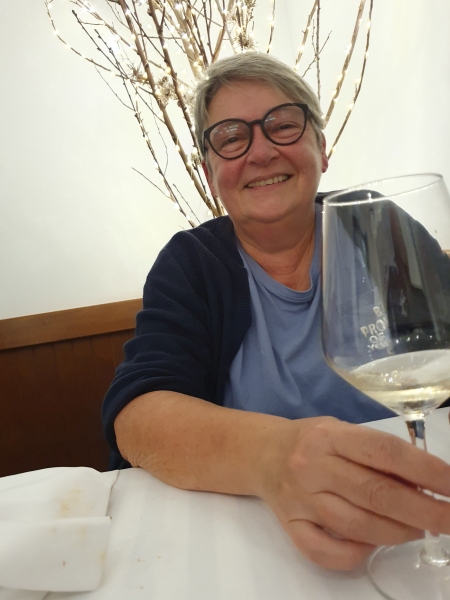
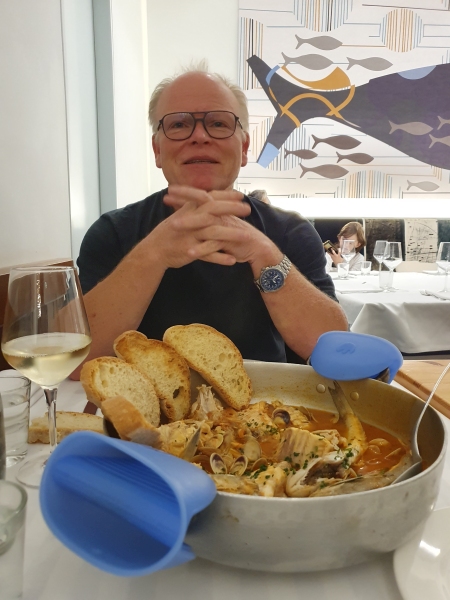
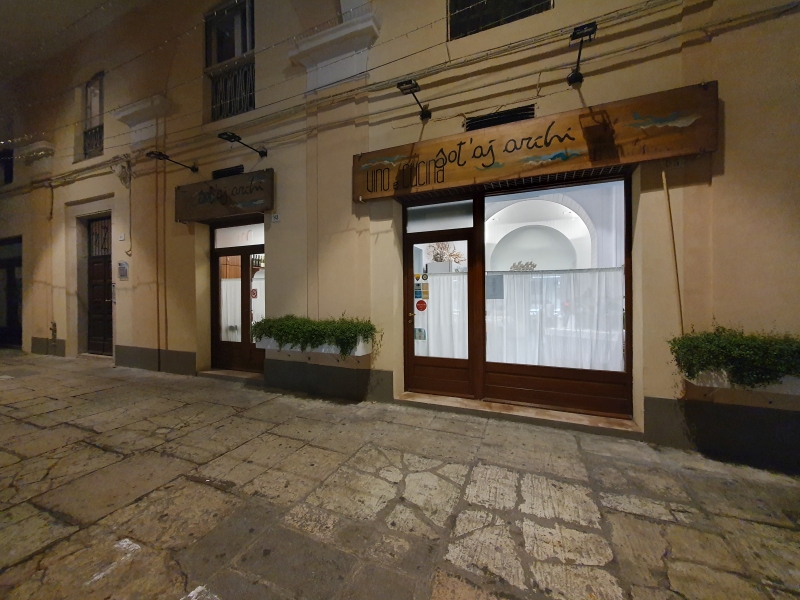
Why is sourcing the fish so difficult? Many different fish are required. The traditional Brodetto all’Anconetana requires 13 different fish and crustaceans! The fish have to be fresh and in relatively small sizes, otherwise you wouldn’t be able to cope with the soup. Indeed, when Elke called to reserve the brodetto they said that they weren’t sure all the ingredients were ready for the day of the reservation.
Dare to recognize all 13 ingredients? Elke could only recognized 7 different ingredients: the small Adriatic clams, squid, ray, nasello (Adriatic hake), tracine (weever) and a piece of palombo (small smooth shark), but there were still a few other fish in there and possibly several types of squid. And, of course, canocchie (grasshopper shrimp), which are so popular on the Adriatic that they deserve an article of their own. They are a strange, flat type of scampi that in the brodetto play just the perfect role.
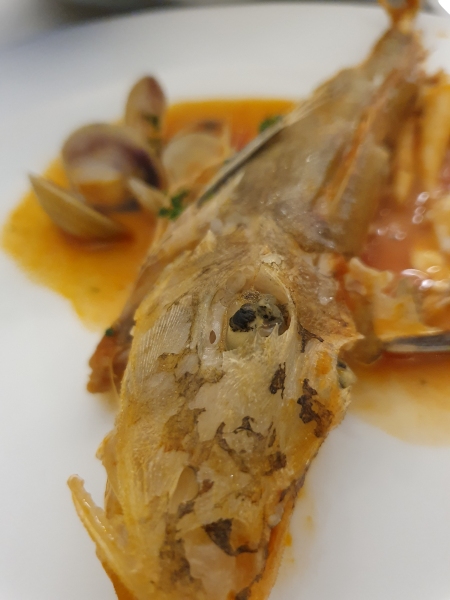
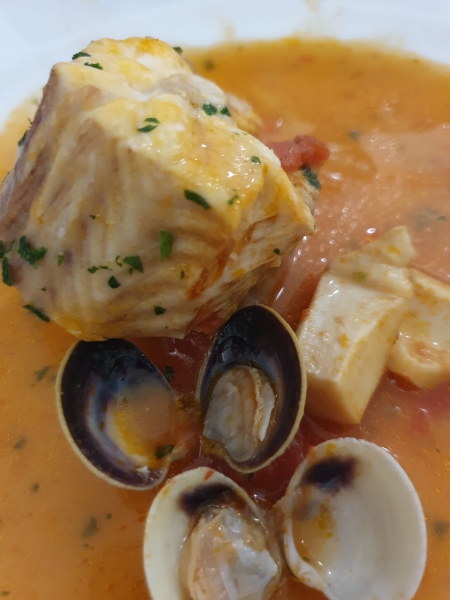
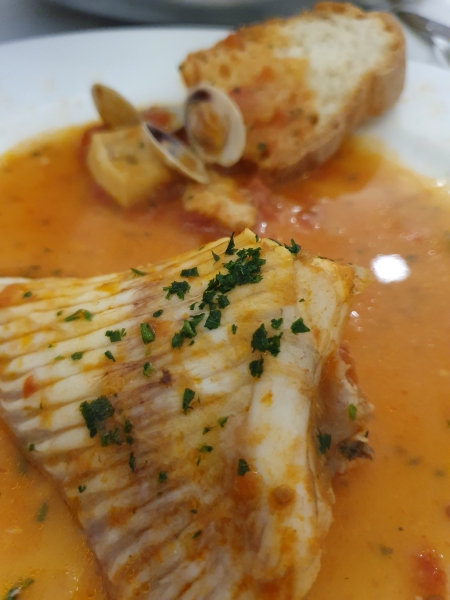
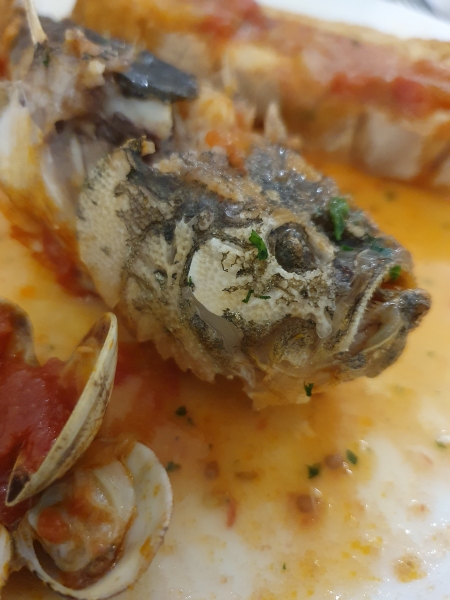

Tips:
- Since not all restaurants offer brodetto, you should first find out where it is offered. A simple Google search for the keywords Ristorante and Brodetto should do it.
- Be sure to pre-order, usually a minimum of 2 people is required!
- Brodetto is comparatively expensive at EUR 30-35 per person, but justified when you consider that there is a lot of fresh fish in it and the preparation is very time-consuming and long.
- From August to September there is often no Brodetto, because then no fresh fish is caught near the coast.
- In Fano there is a Brodetto Festival in mid-September, where up to 30 restaurants put Brodetto on the menu. In 2022, more than 10,000 servings of brodetto were served!
- Porto Recanati celebrates their Brodetto week in June, also with many participating restaurants.
- If you don’t want to pre-order, there is a simpler version in some places, the Padellaccia di Pesce or Padellaccia di Mare, i.e. a fish pan. Elke has already had them at the Oasi in Civitanova Marche, as a starter or with pasta. It mainly contains seafood and no fish and is prepared more quickly, which explains the lower price.

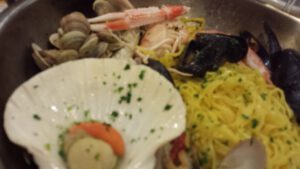
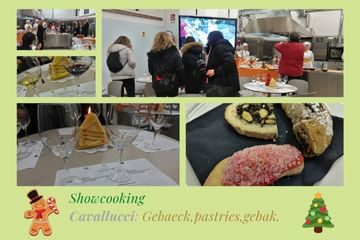
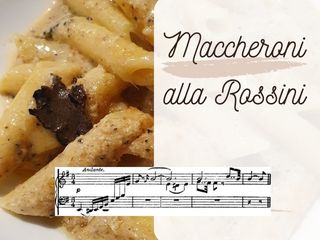
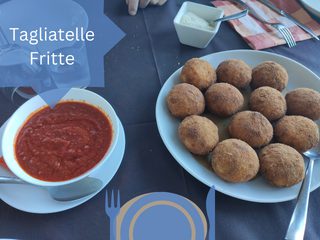
0 Comments